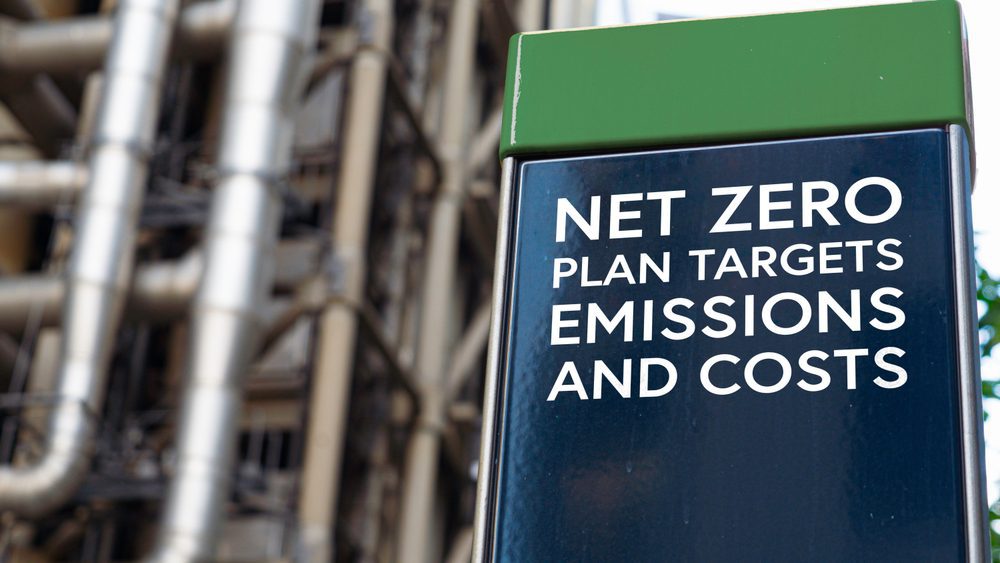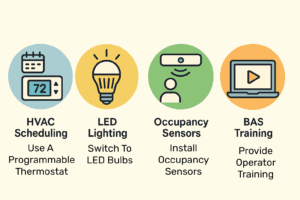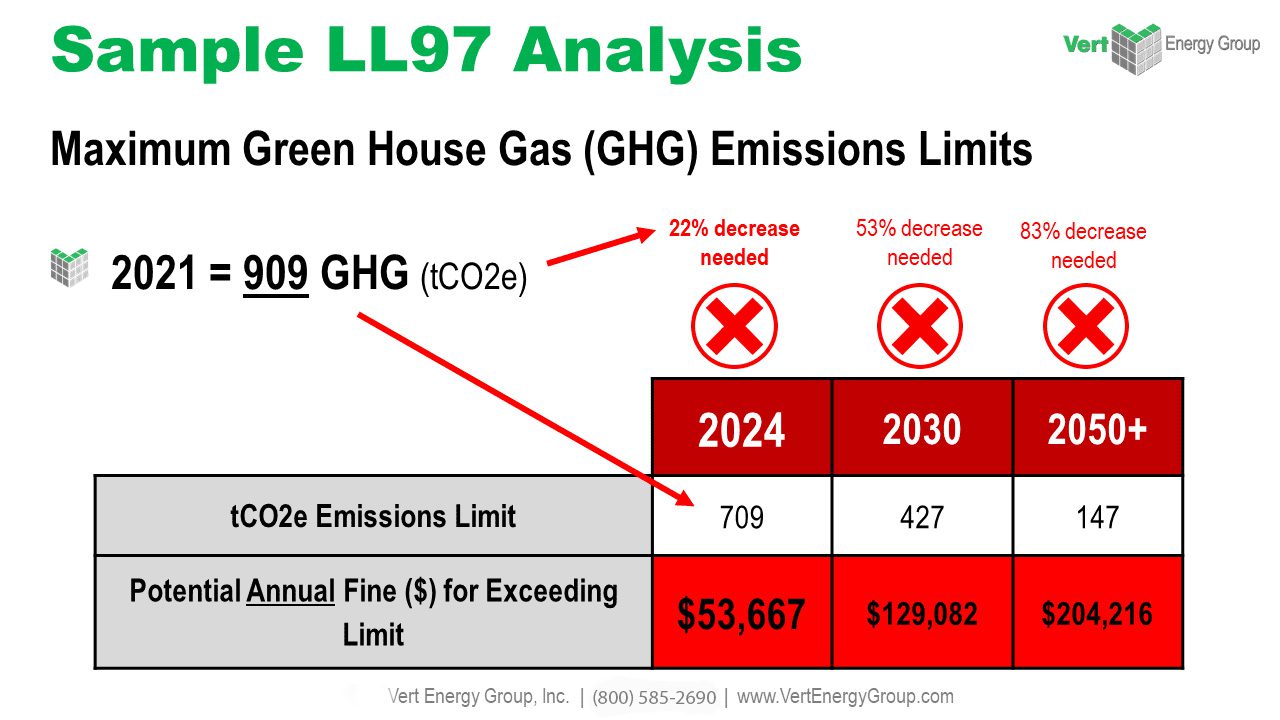Introduction
The world of real estate is amid a profound transformation driven by a compelling need for sustainability. The concept of Net Zero Buildings, once regarded as visionary, now stands as a pioneering force within the commercial property sector. This blog takes an in-depth look at the revolutionary impact of Net Zero Buildings on commercial real estate, highlighting their significance, multifaceted benefits, and the formidable challenges they pose. Let’s embark on a journey into this exciting transformation.
The Concept of Net Zero Buildings
What Are Net Zero Buildings?
Net Zero Buildings, at their essence, represent a harmonious equilibrium between energy generation and consumption over a defined period, typically a year. To attain this balance, a multifaceted approach is deployed:
1. Energy Efficiency and Conservation: Net Zero Buildings place a premium on reducing energy consumption through advanced insulation, meticulous design, and energy-efficient appliances. They meticulously seal any potential energy leaks within their structure.
2. Renewable Energy Sources: These buildings harness energy from renewable sources like solar panels, wind turbines, and geothermal systems, ensuring a sustainable energy supply that meets their needs.
3. Carbon Offsetting: In cases where complete energy neutrality is not achieved, any remaining emissions are offset through activities like tree planting or investments in verified carbon reduction projects.
Key Components of Net Zero Buildings
To manifest the Net Zero vision, several key components take center stage:
1. Building Envelope: A well-crafted, airtight building envelope forms the foundation for energy efficiency, drastically minimizing heat loss or gain and enhancing insulation.
2. Energy-efficient HVAC Systems: High-efficiency heating, ventilation, and air conditioning systems are indispensable for achieving energy conservation objectives.
3. Renewable Energy Integration: The incorporation of solar panels, wind turbines, and other renewable energy sources contributes significantly to generating clean energy.
4. Smart Building Technologies: Leveraging cutting-edge technologies, Net Zero Buildings optimize energy consumption by dynamically adjusting lighting, temperature, and other systems based on real-time data and occupant behavior.
Benefits of Net Zero Buildings
The transition to Net Zero Buildings yields a treasure trove of benefits:
1. Cost Savings: While the initial investment in Net Zero Buildings may be higher, they harvest long-term cost savings through reduced energy bills and lower maintenance costs. In essence, they pay for themselves over time.
2. Environmental Impact Reduction: By producing clean energy and minimizing emissions, Net Zero Buildings wield a potent weapon against climate change, significantly reducing their carbon footprint.
3. Improved Indoor Air Quality: The emphasis on ventilation and the use of toxin-free building materials creates a healthier, more comfortable indoor environment for occupants. Enhanced air quality contributes to better health and productivity.
4. Enhanced Market Value: Net Zero Buildings tend to command higher market values due to their lower operational costs, sustainable features, and the growing demand for eco-conscious properties among tenants and investors alike.
The Commercial Real Estate Industry and Sustainability

Sustainable Development Trends
The concept of sustainability has undergone a profound evolution, transcending from a niche trend to a pivotal driver of innovation within the commercial real estate sector. Sustainable development trends have emerged as key indicators of industry progress.
Regulatory and Certification Framework
Sustainability isn’t just a catchphrase; it’s a commitment with real-world standards and certifications. These authoritative bodies set the benchmarks for sustainable construction:
1. LEED Certification: The Leadership in Energy and Environmental Design (LEED) certification stands as a gold standard in green building practices, rewarding buildings that excel in various sustainability categories.
2. BREEAM Certification: The Building Research Establishment Environmental Assessment Method (BREEAM), primarily employed in Europe, assesses buildings on their environmental performance and sustainability.
3. Green Building Codes: Numerous countries have instituted green building codes, making it mandatory for new construction to meet specific sustainability standards.
Market Demand for Green Buildings
As sustainability gains a firm foothold, tenants actively seek green spaces. This burgeoning demand is transforming the commercial property landscape, leading to higher occupancy rates and increased property values for sustainable buildings.
Sustainable Real Estate Investment
Real estate investors have recognized the wisdom of incorporating sustainability into their portfolios. Sustainable properties offer a unique blend of resilience against market fluctuations and regulatory changes.
Net Zero Building Design and Construction
Integrating Sustainability into Design
Sustainability isn’t an afterthought but an integral aspect of the design process. Architects and engineers play pivotal roles in optimizing building layouts and systems for maximum energy efficiency and environmental impact reduction.
Sustainable Materials and Technologies
The choice of materials in construction matters. Sustainable building materials, such as recycled or low-emission products, serve to reduce the environmental footprint of construction projects. Additionally, innovative building technologies, like 3D printing, have emerged as game-changers in construction, offering reduced waste and enhanced efficiency.
Energy-Efficient Construction Practices
Construction practices have evolved significantly to embrace sustainability. Methods such as modular construction, which involves assembling prefabricated components, reduce waste, energy consumption, and construction timelines. Additionally, efficient waste management practices minimize the environmental impact of construction sites.
Case Studies of Successful Net Zero Commercial Buildings
Real-world examples serve as beacons of possibility in the realm of Net Zero Buildings. The Bullitt Center in Seattle, Washington, is one such pioneer. Not only does it achieve Net Zero energy use, but it also boasts innovative sustainable features like composting toilets and rainwater harvesting. These real-world examples illustrate the remarkable potential of Net Zero Buildings.
Challenges in Achieving Net Zero in Commercial Property

Initial Costs and ROI Concerns
The upfront investment required for Net Zero Buildings can be a substantial barrier for some property developers. However, it’s important to recognize that the long-term savings and enhanced property value often justify these initial expenditures.
Technological and Design Challenges
Achieving Net Zero status demands continuous innovation in design and technology, which can pose challenges for traditional construction practices. Collaboration between architects, engineers, and builders is pivotal in overcoming these hurdles.
Retrofitting Existing Buildings
The transition to Net Zero isn’t limited to new construction; adapting existing buildings to Net Zero standards is equally crucial. However, retrofitting can be complex and costly, involving extensive renovations and upgrades.
Education and Awareness
The success of Net Zero Buildings depends on the active involvement of stakeholders who must invest in education and awareness campaigns. These initiatives can help accelerate the transition to Net Zero and cultivate a culture of sustainability within the industry.
The Future of Net Zero Buildings in Commercial Property
Growing Adoption and Trends
As the world becomes increasingly conscious of sustainability, the adoption of Net Zero Buildings is poised to grow exponentially. It is no longer a matter of ‘if’ but ‘when’ this transformative approach becomes the industry standard.
Technological Advancements
The relentless march of technology will continue to drive the advancement of sustainable building solutions. Innovations in energy storage, materials, and automation will make achieving Net Zero status more cost-effective and achievable.
Government Incentives and Policies
Governments worldwide are increasingly recognizing the urgency of addressing climate change. As a result, they are offering a variety of incentives, tax credits, and regulatory measures to encourage the transition to sustainable building practices.
Predictions for the Next Decade
In the coming decade, Net Zero Buildings may cease to be an aspiration and become the industry norm. Sustainability will evolve from a value-added feature to a non-negotiable requirement for commercial real estate.
Conclusion
In the grand narrative of real estate, Net Zero Buildings are not mere buzzwords but the vanguard of sustainable transformation. They offer a tangible path forward, one that merges economic prosperity with environmental stewardship. As the commercial property sector continues to evolve, industry stakeholders must wholeheartedly embrace the Net Zero revolution, a driving force for positive change that will benefit both our planet and future generations.
In a world where sustainability holds paramount importance, Net Zero Buildings stand as guiding lights, illuminating a path to a greener, more sustainable future for commercial real estate and our planet.
Elevate your property’s energy efficiency with VertPro.com, your one-stop solution for Commercial Energy Audits, Benchmark Compliance consultancy, and our cutting-edge Construction Marketplace. As industry pioneers, VertPro® empowers Building Owners and Property Managers nationwide with innovative SaaS technology-based solutions. From Energy Benchmarking to Energy Audits/RCx Plus, we ensure compliance with over 50 Energy Benchmarking and Energy Efficiency Laws.
Don’t miss out on maximizing your property’s energy potential and value. Explore VertPro.com’s comprehensive solutions today and let us help you unlock the transformation your property deserves.















